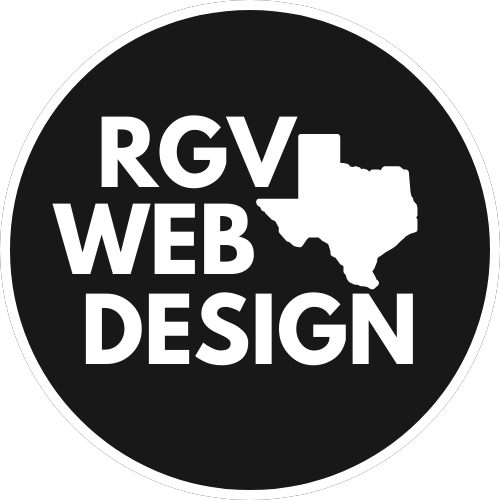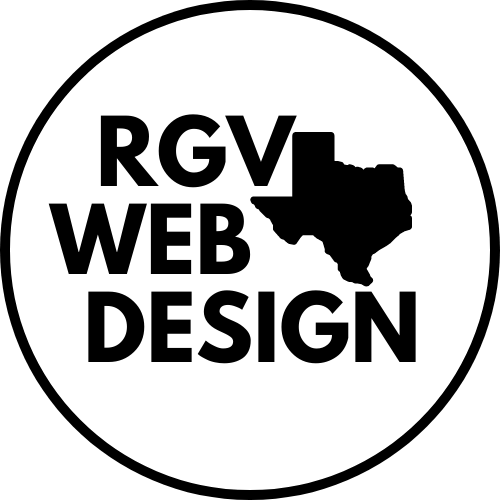| Heading | Subheading(s) |
|---|---|
| Introduction | |
| The Evolution of Web Design | – From Past to Present – Predictions for 2024 |
| User Experience (UX) Design Trends | – Personalization – Accessibility – Speed and Performance |
| User Interface (UI) Design Trends | – Minimalism – Dark Mode – Interactive Elements |
| Mobile-First Design | – Importance – Best Practices |
| Web Design Tips for 2024 | – Embrace New Technologies – Focus on Sustainability |
| SEO and Web Design | – Importance of SEO in Design – How to Optimize |
| Typography in Web Design | – Trends – Best Practices |
| Use of Color and Images | – Color Psychology – Optimizing Images for Speed |
| Incorporating Video | – Benefits – How to Use Effectively |
| Cybersecurity Considerations | – Importance – Tips for Enhancing Security |
| The Role of Artificial Intelligence | – AI in Web Design – Future Prospects |
| Responsive Design Beyond Mobile | – Wearables – Other Devices |
| Load Time and Site Performance | – Tools for Measurement – Improving Performance |
| Sustainability in Web Design | – Eco-friendly Practices – Case Studies |
| Future-proofing Your Website | – Scalability – Adaptability |
| Conclusion | |
| FAQ |
Web Design Tips for 2024: Enhancing User Experience and Performance
Introduction
As we approach 2024, the web design landscape continues to evolve, driven by advancements in technology, changing user preferences, and the ongoing quest for a more accessible, efficient, and engaging online experience. This article explores cutting-edge web design tips that are set to shape the digital world in 2024 in texas web design, offering insights for designers, developers, and website owners alike in texas software development to create compelling, user-friendly websites.
The Evolution of Web Design
Web design has undergone a significant transformation over the years, from the simple, text-heavy pages of the early internet to today’s dynamic, visually stunning sites. As we look towards 2024 in McAllen web design, we anticipate further innovations that will redefine the online experience.
From Past to Present
The journey of web design has been marked by milestones such as the introduction of CSS, responsive design, and the rise of mobile-first approaches. These developments have paved the way for more sophisticated, user-centric designs.
Predictions for 2024
In 2024, we expect to see web design driven by AI, increased personalization, and a stronger focus on sustainability. Designs will be more adaptive, responding to user behavior and environmental factors to offer tailored experiences.
User Experience (UX) Design Trends
User experience remains at the heart of web design, with a focus on creating intuitive, enjoyable interactions. In 2024, UX will be all about exceeding user expectations through personalization, accessibility, and performance.
Personalization
Personalization will go beyond basic tailoring, using AI to anticipate user needs and offer customized content and recommendations, enhancing the overall user journey.
Accessibility
Accessibility will be a major focus, with designs that ensure all users, regardless of their abilities, can easily navigate and interact with websites.
Speed and Performance
As attention spans continue to shorten, speed and performance will be critical. Websites in 2024 will need to load quickly and run smoothly, regardless of device or connection speed.
User Interface (UI) Design Trends
The user interface plays a key role in the overall user experience, and in 2024, we’ll see trends like minimalism, dark mode, and interactive elements taking center stage.
Minimalism
Minimalist designs, characterized by clean lines and uncluttered layouts, will dominate, focusing user attention on essential content and actions.
Dark Mode
Dark mode will continue to be popular, offering a stylish look while reducing eye strain and saving battery life on mobile devices.
Interactive Elements
Interactive elements, such as micro-interactions and animations, will enhance engagement, providing feedback and guiding users through their online journey.
Mobile-First Design
With mobile devices accounting for a significant portion of web traffic, a mobile-first approach will be essential. Designs must be optimized for smaller screens, ensuring a seamless experience across all devices.
Importance
Mobile-first design is not just about resizing content for smaller screens; it’s about rethinking the design process to prioritize mobile experiences from the start.
Best Practices
Best practices include using flexible layouts, touch-friendly navigation, and testing on actual devices to ensure optimal performance.
Web Design Tips for 2024
For web designers and website owners looking to stay ahead, embracing new technologies and focusing on sustainability will be key.
Embrace New Technologies
Innovations such as augmented reality (AR), virtual reality (VR), and voice user interfaces (VUIs) will offer new ways to engage users and create immersive experiences.
Focus on Sustainability
Sustainable web design practices, such as optimizing assets for lower energy consumption, will gain traction, reflecting a growing awareness of the environmental impact of digital products.
SEO and Web Design
SEO remains a critical consideration in web design. In 2024, integrating SEO best practices into the design process will be essential for visibility and success.
Importance of SEO in Design
A well-designed website must also be discoverable. Incorporating SEO from the outset ensures that design choices support visibility in search engine results.
How to Optimize
Optimizing for SEO involves using semantic HTML, ensuring fast load times, and structuring content in a way that search engines can easily understand.
Typography in Web Design
Typography will play a pivotal role in conveying brand personality and improving readability. Trends will include dynamic fonts, variable fonts, and the integration of local culture into typeface choices.
Trends
Emerging trends in typography will focus on flexibility, with variable fonts allowing a wide range of stylistic variations without sacrificing performance.
Best Practices
Best practices in typography include prioritizing legibility, using hierarchy to guide the reader’s eye, and selecting fonts that reflect the brand’s identity.
Use of Color and Images
Color and images are powerful tools in web design, capable of evoking emotions and guiding user behavior.
Color Psychology
Understanding color psychology will be crucial for designers, as color choices can significantly affect user perception and actions.
Optimizing Images for Speed
While images enhance the visual appeal, they must also be optimized for speed. Techniques such as lazy loading, compression, and the use of modern formats like WebP will be important.
Incorporating Video
Video continues to be a popular medium for engagement. In 2024, using video effectively will involve balancing quality with performance, ensuring accessibility, and creating content that adds value.
Benefits
Video can convey complex information quickly, increase dwell time, and improve conversion rates.
How to Use Effectively
Effective use of video includes optimizing for load times, providing captions and transcripts for accessibility, and integrating video in a way that complements the overall design.
Cybersecurity Considerations
As threats evolve, cybersecurity will be an integral part of web design. Protecting user data and ensuring the integrity of websites will be paramount.
Importance
A secure website builds trust with users, protecting both them and the business from potential harm.
Tips for Enhancing Security
Enhancing security involves implementing HTTPS, regular security audits, and educating users on safe browsing practices.
The Role of Artificial Intelligence
AI will revolutionize web design, from automating design tasks to creating personalized user experiences. The potential of AI in web design is vast, offering efficiency and innovation.
AI in Web Design
AI can assist in areas such as layout generation, content creation, and user testing, streamlining the design process.
Future Prospects
The future of AI in web design looks promising, with the potential for AI to create designs that adapt in real-time to user needs and preferences.
Responsive Design Beyond Mobile
Responsive design will extend beyond mobile devices to include wearables, smart TVs, and other IoT devices, requiring designs to be flexible and adaptable across a wide range of screen sizes and contexts.
Wearables
Designing for wearables involves considering smaller screens and context-specific use cases, such as fitness tracking or notifications.
Other Devices
As the IoT continues to grow, web designs will need to accommodate a variety of devices and interfaces, from smart speakers to augmented reality headsets.
Load Time and Site Performance
Site performance is critical for user satisfaction and SEO. In 2024, optimizing for speed will involve advanced techniques and prioritizing performance from the start of the design process.
Tools for Measurement
Tools like Google’s PageSpeed Insights and Lighthouse will continue to be essential for measuring and improving site performance.
Improving Performance
Strategies for improving performance include optimizing images, minifying CSS and JavaScript, and leveraging browser caching.
Sustainability in Web Design
Sustainability will become a key consideration in web design, focusing on reducing the carbon footprint of digital products and promoting eco-friendly practices.
Eco-friendly Practices
Practices such as optimizing assets, choosing green hosting providers, and minimizing data transfer will contribute to more sustainable web design.
Case Studies
Case studies of sustainable web designs will inspire and guide designers in implementing eco-friendly practices in their projects.
Future-proofing Your Website
Ensuring your website can adapt to future changes is essential. Scalability and adaptability will be key factors in designing websites that stand the test of time.
Scalability
Designing for scalability involves creating flexible layouts and choosing technologies that can accommodate growth and change.
Adaptability
Adaptable designs are able to evolve with technology trends and user expectations, ensuring longevity in the fast-paced digital world.
Conclusion
Web design in 2024 in McAllen Texas website design will be characterized by a focus on user experience, performance, and sustainability. By embracing new technologies, prioritizing accessibility, and incorporating SEO from the start, designers can create websites that not only look great but also perform well and meet the needs of a diverse user base. As we look to the future, the possibilities for innovative, engaging, and efficient web design are endless.
FAQ
- How can I ensure my website is accessible to all users?
- What are the best practices for optimizing website speed?
- How does AI impact web design?
- Can web design influence SEO rankings?
- What are the upcoming trends in typography for web design?
- How important is mobile-first design in 2024?
References
- Smashing Magazine: A comprehensive resource for web designers and developers, offering the latest trends, techniques, and best practices in web design. Visit Smashing Magazine
- WebAIM (Web Accessibility In Mind): Provides extensive resources on making web content accessible to people with disabilities. Explore WebAIM
- Google Developers: Google’s Web Fundamentals guides offer best practices and tips for developing fast, engaging, and responsive websites. Google Web Fundamentals
- A List Apart: Focuses on web standards and best practices. It’s a great resource for articles on design, development, and web content. Visit A List Apart
- W3C (World Wide Web Consortium): Offers guidelines for web design and development, including accessibility standards (WCAG), which are crucial for creating inclusive web experiences. W3C Standards
- Nielsen Norman Group: World leaders in research-based user experience. Offers reports, articles, and guidelines on UX best practices. Nielsen Norman Group
- Envato Tuts+: Provides tutorials and articles on web design and development, covering a wide range of topics from basic to advanced levels. Visit Envato Tuts+
- Moz Blog: Offers insights into SEO and marketing in the digital age. It’s a valuable resource for understanding how web design impacts SEO. Explore Moz Blog
- CSS-Tricks: A web design community centered around CSS, but also covering all aspects of web design and development. Visit CSS-Tricks
- Behance: Showcases the latest web design projects from professionals around the world, providing inspiration and new ideas. Explore Behance





